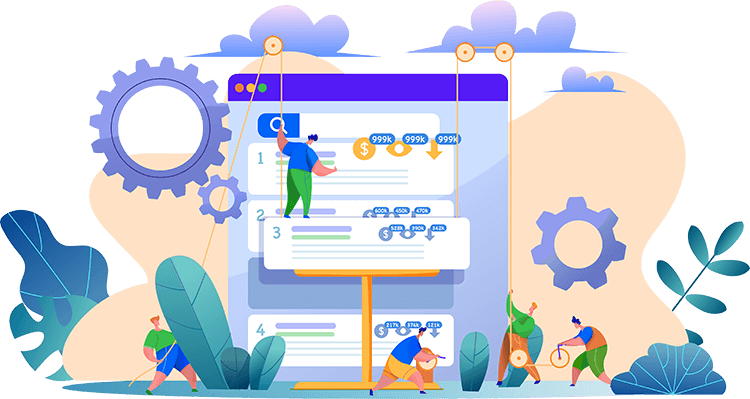
Task Automation
Python Automation
Description: Python is one of the most versatile programming languages for automation, used across IT, DevOps, and data environments. With powerful libraries such as os, subprocess, paramiko, and requests, it can automate virtually anything—from server management and API interactions to data processing and system monitoring. Python scripts are easy to maintain, portable, and integrate seamlessly with other systems.
Use Cases: Server management, file and log handling, API automation, data processing, cloud orchestration.
Why It Stands Out: Cross-platform, readable, and endlessly extendable — a favorite tool for both developers and system administrators.
PowerShell
Description: PowerShell is Microsoft’s powerful automation and configuration framework for Windows, Azure, and cross-platform environments. It allows administrators to manage systems, automate repetitive tasks, and access deep system-level functionality through simple scripts. With modules for everything from Active Directory to Exchange and Microsoft 365, PowerShell is essential for modern IT operations.
Use Cases: Windows system administration, Active Directory automation, Office 365 management, backup scripting.
Why It Stands Out: Deep system integration, powerful scripting, and ideal for automating complex Windows environments.
Bash & Shell Scripting
Description: Bash scripting is the foundation of automation on Linux and Unix systems. It enables administrators to chain commands, automate repetitive tasks, and manage entire systems efficiently. Combined with tools like Cron and systemd, shell scripts power the automation backbone of servers, DevOps workflows, and embedded systems.
Use Cases: Server maintenance, backup scheduling, process monitoring, deployment scripts.
Why It Stands Out: Lightweight, fast, and indispensable for Linux administrators and DevOps engineers.
Python + API Integration
Description: Many modern automations rely on integrating with APIs — and Python makes this easy. Using libraries like requests, aiohttp, and pydantic, it can connect systems, pull or push data, and trigger workflows automatically. This bridges IT systems, CRMs, and monitoring tools for a fully connected environment.
Use Cases: Cloud resource automation, REST API scripting, cross-platform integrations.
Why It Stands Out: Enables powerful, customized automations with minimal code.
Ansible
Description: Ansible is a powerful open-source IT automation platform that simplifies configuration management, application deployment, and orchestration. Using human-readable YAML playbooks, IT teams can automate complex multi-server environments with ease. Ansible reduces manual effort while ensuring consistency and security across systems.
Use Cases: Server provisioning, configuration management, infrastructure as code (IaC).
Why It Stands Out: Agentless, simple syntax, and trusted by DevOps teams globally.
n8n
Description: n8n is an open-source workflow automation tool that gives users full control over their automations. It supports hundreds of integrations and can be self-hosted for privacy and flexibility. Ideal for developers and IT teams, n8n enables complex, customizable workflows that integrate APIs, databases, and services.
Use Cases: IT process automation, data synchronization, self-hosted integration hub.
Why It Stands Out: Open-source, privacy-friendly, and highly customizable for complex workflows.
Node-RED
Description: Node-RED is a visual programming tool for wiring together hardware devices, APIs, and online services. Developed by IBM, it’s widely used in IoT and smart home environments to automate actions between sensors, controllers, and applications. Its drag-and-drop interface makes it easy to build powerful automation flows quickly.
Use Cases: Smart home automation, IoT device control, industrial process automation.
Why It Stands Out: Ideal for IoT and hardware integration with strong flexibility and open-source support.
Zapier
Description: Zapier is a leading no-code automation platform that connects thousands of web applications, allowing users to create automated workflows called “Zaps.” It helps teams eliminate repetitive manual tasks, streamline communication, and integrate services like Gmail, Slack, and Google Sheets seamlessly. With its intuitive interface, automation becomes accessible to everyone — no coding required.
Use Cases: Workflow automation, lead management, reporting automation, system integration.
Why It Stands Out: Simple to use, connects thousands of apps, and drastically reduces manual work.
IFTTT (If This Then That)
Description: IFTTT is one of the most well-known automation platforms, enabling users to connect apps, services, and smart devices with simple “if this, then that” logic. It’s designed for convenience, making it easy for anyone to build automations that save time and simplify daily workflows. IFTTT bridges consumer and business applications effortlessly.
Use Cases: Smart home routines, app notifications, data syncing, task reminders.
Why It Stands Out: Extremely user-friendly with broad device and service compatibility.
